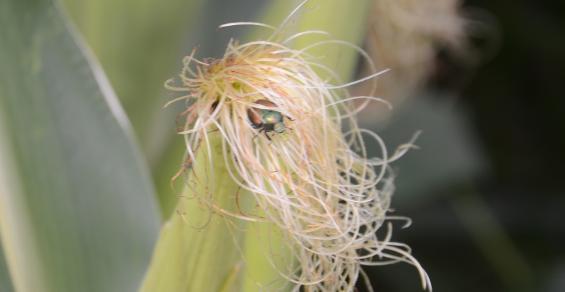Corn Illustrated: Make notes while scouting and then review them after the season ends to improve next year’s management strategies.
Anyone who likes growing corn and aims for top yields likely scouts fields at key times during the season. Dave Nanda, a trained plant breeder who is director of genetics for Seed Genetics Direct, enjoys scouting cornfields all season long.
“You always want to observe and learn,” Nanda says. “I try to figure out what the crop is trying to tell me.”
There are different ways to remember what you see — take mental notes, carry a notebook and write down observations, drop a pin electronically and note what you saw and where you saw it. Another effective method is taking pictures of noteworthy observations in the field.
After the season ends, it’s important to pull out your notes, however they’re stored, and review them, Nanda says. This should help you develop better management strategies for next season.
This discussion is based on three observations captured in pictures while scouting corn in 2022:
1. Beetles at work. When corn is silking, it’s prudent to scout and make sure beetles are not clipping silks, Nanda says. In this case, a lone Japanese beetle was feasting on corn silks (see photo above). Rootworm beetles are the other main culprit that can feed on corn silks.
“If they clip silks too short and pollination is still underway, it can affect kernel set,” Nanda says. “It’s always worth checking fields once silking begins to make sure there isn’t enough silk clipping underway to justify spraying an insecticide.”
2. One ear vs. two ears. Parents helping 4-H’ers in the crop project often suggest their son or daughter pick cornstalks with two ears to exhibit at the county fair. If you’re going to be that parent, make sure both ears are good. Often, judges prefer seeing one good, big ear per stalk.
The reality today is that in most high-yield fields, stalks produce one large, sound ear with deep, plump kernels, Nanda says. If there are 33,000 or more big ears per acre, you can reach top yields, he adds.
“The second ear often doesn’t pollinate well,” he says. “There may be few kernels on it. You don’t want a second ear which takes away nutrition and contributes little to final yield.”
1 BETTER THAN 2: Are two ears per stalk better than one? Plant breeders say that in today’s corn production system, one good ear is often better than two.
3. Second shoots. You also don’t want second shoots emerging from the same node as the main ear, Nanda says. That’s not a characteristic plant breeders want to see in a hybrid.
The reasoning is similar to why you don’t want a second ear, Nanda says. “The shoot isn’t going to produce an ear at all in this case,” he explains. “You don’t want extra vegetative growth taking up moisture and nutrients and not contributing to yield.”
OH, SHOOT: Most agronomists don’t like to see shoots for a second ear peeking out from under the main ear.





